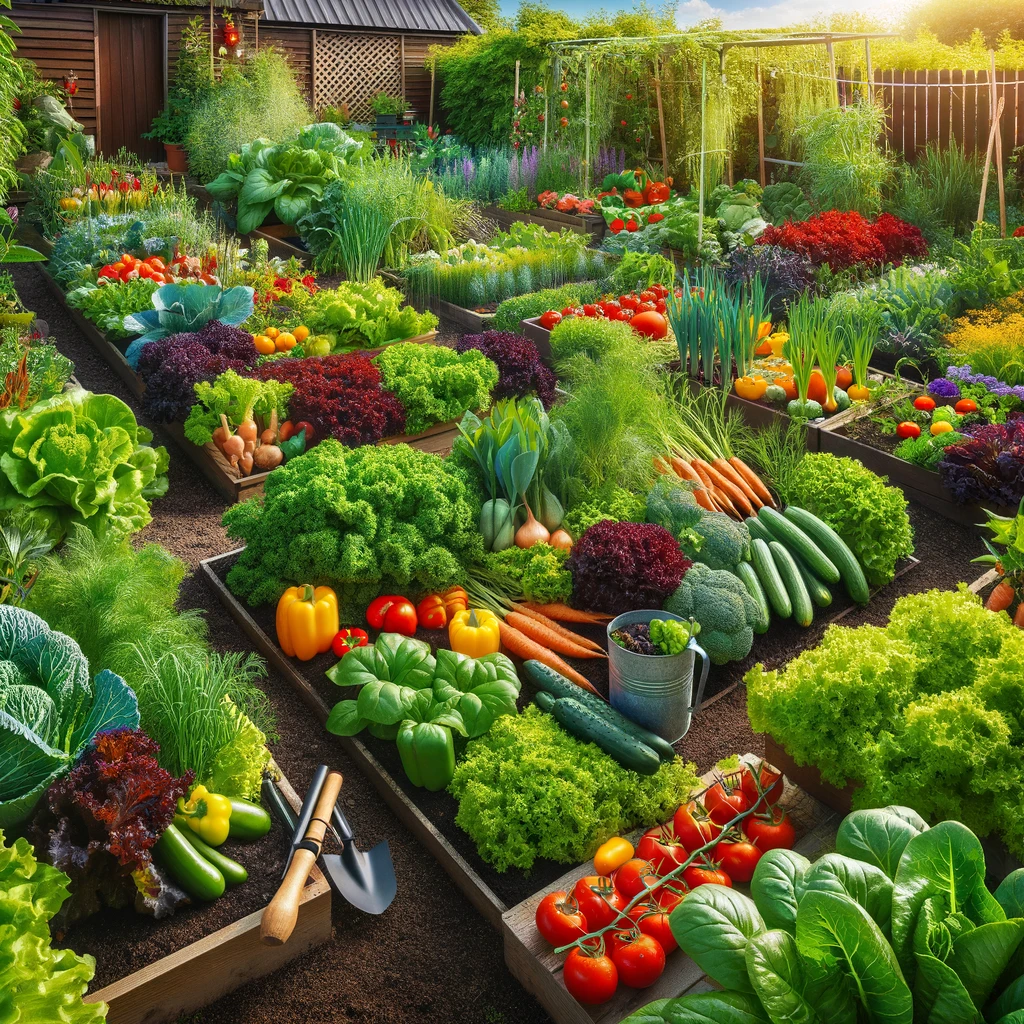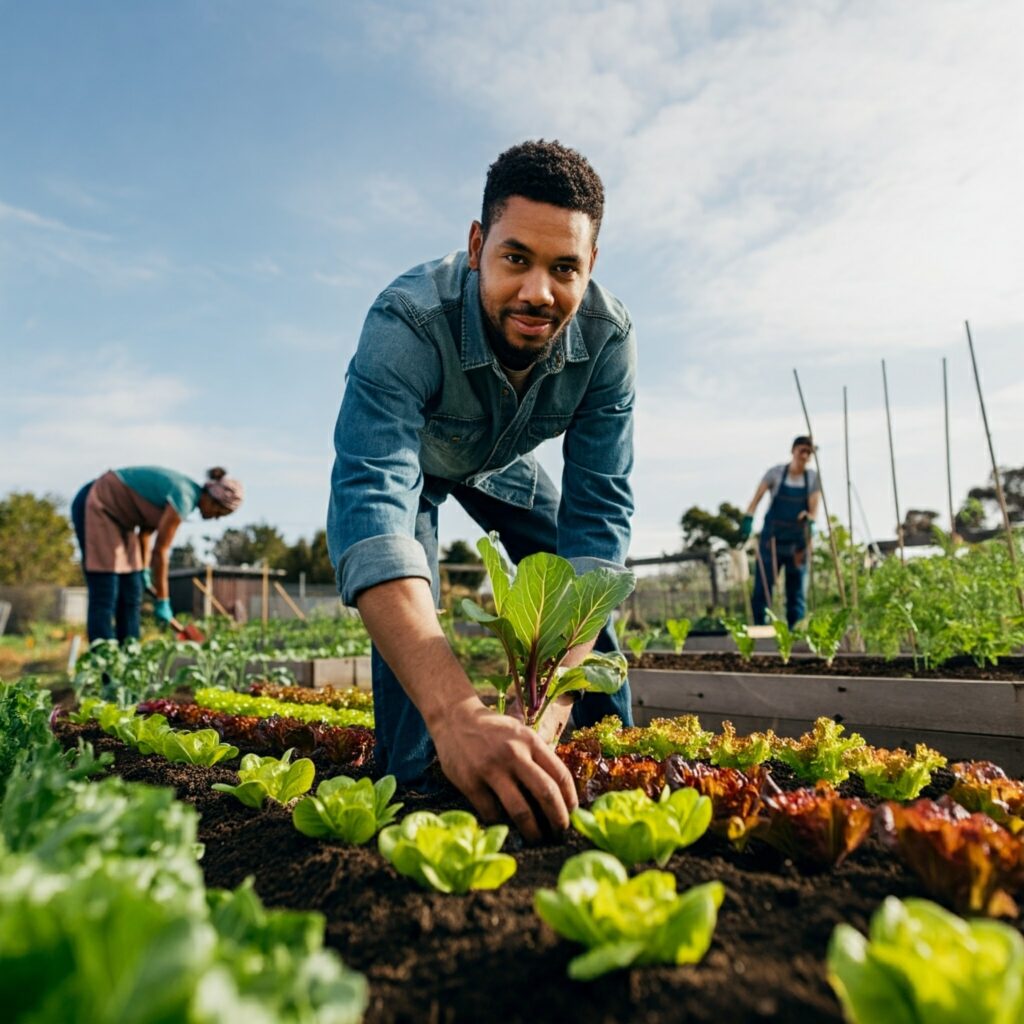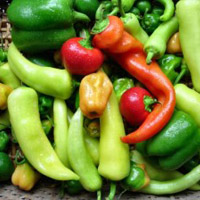Vegetable Gardening For Beginners
Starting a vegetable garden can seem daunting, but anyone can cultivate a thriving garden with the proper guidance.
Not only does it provide a sustainable source of fresh produce, but it also offers numerous physical and mental health benefits.
In this guide, we’ll cover the essentials of vegetable gardening for beginners, helping you grow delicious and nutritious vegetables in your backyard.
Choosing the Right Location
The success of your vegetable garden largely depends on its location.
Most vegetables require 6-8 hours of direct sunlight daily, so choose a spot with ample sunshine. Observe your yard throughout the day to identify the sunniest areas.

Consider accessibility to water sources, as your garden will need regular watering.
Ensure the location has good drainage to prevent waterlogging, which can lead to root rot and other plant diseases.
Protection from strong winds is also crucial. If your garden is exposed, consider installing windbreaks like fences or hedges to shield your plants.
Understanding Your Soil
Healthy soil is the foundation of a thriving garden. Start by testing your soil’s pH and nutrient levels. Most vegetables prefer slightly acidic to neutral soil (pH 6.0-7.0).
You can purchase a soil testing kit or send a sample to your local agricultural extension office for a more comprehensive analysis.
Improve your soil by adding organic matter such as compost, aged manure, or leaf mold.
This enhances soil structure, improves drainage, and provides essential nutrients.
Work the organic matter into the top 6-8 inches of soil before planting.
Choosing Your Vegetables
As a beginner, start with easy-to-grow vegetables suited to your climate. Some beginner-friendly options include:
- Tomatoes
Tomatoes are popular warm-season vegetables that thrive in full sun and well-drained soil. Start seeds indoors 6-8 weeks before the last frost date or plant seedlings outdoors after frost danger has passed. Space plants 18-24 inches apart in rows 3-4 feet apart. - Lettuce and other leafy greens
Lettuce and leafy greens are cool-season crops that grow quickly and easily.
They prefer temperatures between 60-70°F (15-21°C) and can tolerate light frost. - Sow seeds directly in the garden in early spring or fall. Plant in rows 12-18 inches apart, with seeds 1/4 inch deep. Thin seedlings to 4-6 inches apart for leaf lettuce, 6-8 inches for romaine, and 10-12 inches for head lettuce.
- Zucchini and summer squash
Zucchini and summer squash are warm-season crops that overgrow and produce abundantly. They belong to the cucurbit family, which also includes cucumbers and melons. - Planting:
- Sow seeds directly in the garden after the last frost date when soil temperatures reach 60°F (15°C).
- Plant in hills or rows, spacing plants 24-36 inches apart in rows 3-4 feet apart.
- For earlier harvests, start seeds indoors 3-4 weeks before the last frost date.
- Growing conditions:
- Beans (bush or pole varieties)
- Radishes
- Carrots
- Cucumbers
- Herbs like basil, cilantro, and parsley
Consider your family’s preferences and how much space each plant requires.
Some vegetables, like squash and melons, need more room to spread, while others, like lettuce and herbs, can be grown in small spaces or even containers.
Planning Your Garden Layout
Create a garden plan before planting. Consider each plant’s mature size and space them accordingly. Taller plants should be placed on the north side of the garden to avoid shading shorter ones.
Implement crop rotation by avoiding planting the same family of vegetables in the same spot year after year. This helps prevent soil depletion and reduces the risk of pest and disease buildup.
Consider companion planting, where certain plants benefit each other when grown nearby. For example, planting basil near tomatoes can improve flavor and repel pests.
Essential Gardening Tools
Invest in quality basic tools to make your gardening tasks easier:
- Garden gloves
- Trowel
- Hand pruners
- Garden fork
- Watering can or hose with adjustable nozzle
- Wheelbarrow or garden cart
- Garden rake
As you gain experience, you may want to add more specialized tools to your collection.
Planting Your Garden
Follow the planting instructions on your seed packets or plant labels. Generally, plant seeds about three times as deep as the seed’s diameter.
For transplants, dig a hole slightly larger than the root ball and gently place the plant, firming the soil around it.
Water thoroughly after planting, and add a layer of mulch around your plants.
Mulch helps retain moisture, suppress weeds, and regulate soil temperature.
Watering and Fertilizing
Consistent watering is crucial for vegetable gardens. Most vegetables need about 1 inch of water per week from rainfall or irrigation. Water deeply and less frequently to encourage deep root growth.
Fertilize your plants based on their specific needs and your soil test results.
Many vegetables benefit from a balanced, all-purpose fertilizer applied according to package instructions.
Organic options like compost tea or fish emulsion can also provide necessary nutrients.
Managing Pests and Diseases
Monitor your garden regularly for signs of pests or diseases.
Proper plant care and garden hygiene can prevent or minimize many issues.
Diseased plants should be removed promptly to prevent their spread.
For pest control, start with the least toxic methods:
- Handpicking larger pests like caterpillars
- Using row covers to protect plants
- Introducing beneficial insects like ladybugs
- Applying organic pest control solutions like neem oil or insecticidal soap
Harvesting Your Produce
Harvest your vegetables at peak ripeness for the best flavor and nutrition.
Most vegetables are ready when they’re of usable size and have good color.
Harvesting regularly encourages continued production in many plants.
Here are some harvesting tips for common vegetables:
- Tomatoes: Harvest when fully colored but still firm
- Lettuce: Pick outer leaves, allowing the center to continue growing
- Zucchini: Pick when 6-8 inches long for best flavor
- Beans: Harvest when pods are crisp, and seeds are small
- Carrots: Pull when the top of the root is 1/2 to 3/4 inch in diameter
Extending the Growing Season
To maximize your garden’s productivity, consider techniques to extend the growing season:
- Use row covers or cold frames to protect plants from early or late frosts
- Plant cool-season crops like spinach and peas in early spring and again in late summer for fall harvest
- Use succession planting by sowing short-season crops every few weeks for a continuous harvest
Learning and Adapting
Keep a garden journal to track your successes, challenges, and observations. This will be an invaluable resource as you plan future gardens.
Don’t be discouraged by setbacks – every gardener faces challenges.
Learn from your experiences and adjust your approach as needed.
Gardening is a continual learning process, and each season brings new opportunities to grow both as a gardener and in your harvest.
Conclusion
Starting a vegetable garden is a journey of discovery and reward.
With patience, care, and attention, you’ll soon be enjoying the fruits (and vegetables) of your labor. Remember, the key to successful gardening is to start small, learn as you go, and, most importantly, enjoy the process. Happy gardening!





